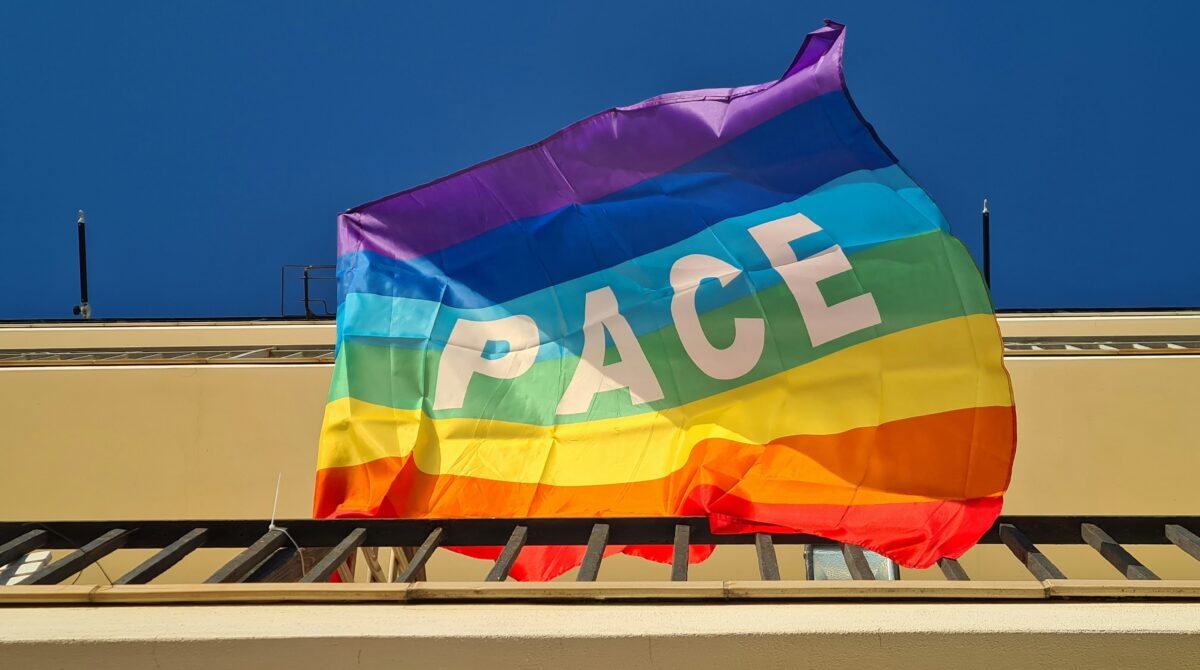How did the idea for the web Portal of Italian Pacifism come about, and why did you consider it important?
The web Portal is a collective effort involving three organizations: ARCI, Un Ponte Per, and Sbilanciamoci. The idea emerged from the intersection of two narratives: that of Tom Benetollo, the unforgettable president of ARCI, and that of Italian pacifism. While considering how to commemorate Tom on the 20th anniversary of his passing this year, we also reflected on current events in Ukraine and Gaza—conflicts that seem to have exceeded all conceivable limits of horror.
We firmly believe that the memory of the past is something we have a duty to pass on to future generations. Trees cannot grow without roots. Since the history of social movements, particularly pacifism, is not widely known, we want to tell it accurately.
I am part of the pacifist generation that began in the 1980s. Although we are still active, this is the time for a new generation of activists who face incredible challenges. When we started, there was a sense that we could afford to wait for the effects of the pacifist movement to materialize. We have witnessed the impact of those struggles for peace: my generation fought for the fall of the Berlin Wall, and it came down; we fought for Nelson Mandela’s freedom, and he was released.
Today, however, the younger generation faces the pressing issue of time because the events unfolding now threaten the very survival of humanity. My generation does not need to lecture the younger ones, who have enormous challenges ahead of them. Each generation builds its own culture, often by breaking with the past. However, knowing history provides a solid foundation on which to build the future.
How is the Portal structured, and who can access it?
The Portal is freely accessible to everyone. It is organized into several sections.
One section explores the roots of pacifism before the 1980s, including pre-World War I pacifist movements. Another focuses on the 1980s, highlighting the fight against nuclear arms and the fall of the Berlin Wall. It then delves into the 1990s, a decade when pacifism spread globally, addressing the Balkan wars and peace efforts in the Middle East.
Next is the section on the 2000s, a period when the pacifist movement intertwined with global justice, social, and climate movements. Pacifism during this time was no longer a separate entity but integrated various causes and a global network. This culminated in the massive protest against the Iraq War, described by The New York Times as the “second superpower.”
The following years saw the rise of far-right movements worldwide, a reactionary response to people’s fears in the face of a global crisis. Finally, the contemporary decade addresses the reality of a “piecemeal” world war that risks escalating into a full-scale global conflict.
In 2018, Nobel Peace Laureate Adolfo Pérez Esquivel and President Daisaku Ikeda issued a call to young people worldwide, stating: “In this 21st century, humanity is facing continuous changes and difficult challenges. We must preserve memory because it illuminates the present and generates the capacity and resilience of peoples to build new alternatives, lights of hope to make ‘another world possible.’” What is the role of memory in building “another possible world”?
People often associate memory with past tragedies rather than with the transformative power of history — its positive events, struggles, enthusiasm, determination, and patience, which have gradually changed the world.
We tend to emphasize tragic stories over the positive history that has contributed to change. I believe it’s essential to convey to new generations that the “path” they walk is filled with positive energy and the struggles of those who came before them.
The thread connecting the fight for human emancipation and liberation runs deep in history. This thread intertwines numerous cultures, ideologies, and diverse experiences. The history of pacifism spans all of human history, encompassing the peasant revolts of the 1500s, those who were burned at the stake, and countless stories of rebellion against injustice. These should all be seen as our stories.
We are the heirs of an immense narrative of resistance against dominant powers driven by control and oppression. Memory means recognizing that we come from a long journey that includes great defeats. For example, consider the story of Italy’s liberation movement from Nazi-fascism. We celebrate its victory, the liberation, but we know little of the earlier history — about the partisans who fought and lost their lives when fascism seemed invincible. Without them, April 25th would not exist.
We must reclaim the history of those who fought for our freedom from oppression and dominance over others and nature. This enables us to believe that “another world is possible.”
How will the awareness-raising events be organized, and what results do you expect?
The idea is to organize initiatives that actively engage people and align with the needs of those who request them. For example, combining the presentation of the Portal with discussions on how to be better pacifists today, involving young people and students.
We want to use the Portal to empower discussions on how to be active pacifists now. At a recent event in Piacenza, a young woman shared her belief in nonviolence but admitted that today’s world made her feel that violence might be the only option. I told her about my experience as a young activist in the 1970s. At that time, the movement degenerated into violent clashes, which led me to withdraw from politics out of fear.
In the 1980s, I returned to activism after participating in a peaceful demonstration where I saw many nonviolent people. I realized then that nonviolence is the ultimate form of participation. It allows everyone to express dissent without delegating others out of fear of violent conflict.
Nonviolence is the highest expression of conflict — a constant in human history — that enables everyone, including the most vulnerable, to participate peacefully.
